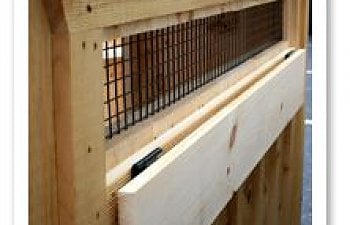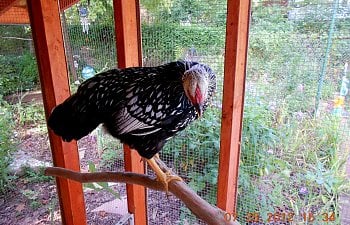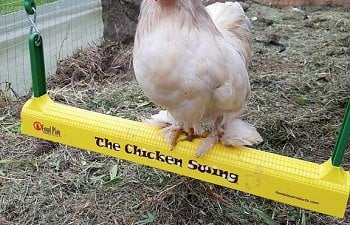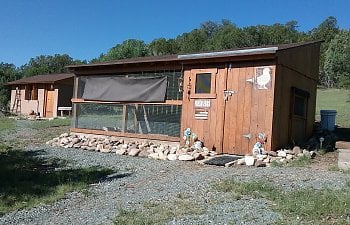
What is a healthy coop? A healthy coop breeds healthy birds. It's one that offers your flock the best environment to thrive and live a healthy life. How much room do chickens need? Is my coop predator proof? Does it have enough ventilation for good health? What sort of bedding is best for my birds? Am I creating the best opportunity for my flock to thrive? I will touch lightly on many subjects in this article and because I am not going deeply into any of them, I will leave links for further reading at the bottom.
Space:
We first need to decide just how many chickens we plan on keeping as the birds need a certain amount of personal and living space to be happy and healthy. Be forewarned however, chickens are addicting and you may want more over time! I recommend you incorporate this idea into your coop build or pre-existing coop so you give them their needed space. Chickens need at least 5 square feet per bird in the coop and at least 10 square feet per bird in the run. It is VERY important you do not over crowd chickens, they can and do become cannibalistic to the point of killing each other, they can starve out lower ranking birds and of course disease is more likely to spread. If you have the room, or can manage keeping less chickens in your space, give them as much space as possible, your birds will be healthier and happier. More IS more in this case.
Along these lines of space, if you do keep a lot of birds in your coop and run, make sure to put out several food and water stations. Too much competition will cause guarding at these areas and the lower ranking birds can be completely bullied away from food and water. You don't want them resorting to eating bedding or oystershell because they are starving to death. Create a couple of places to get sustenance, the higher ranking birds can't guard all of them. Occasionally check your birds crops at roosting time to make sure they ARE getting enough to eat. An empty crop could mean they are being bullied away from food or possible illness of this bird.
Keeping out Predators:
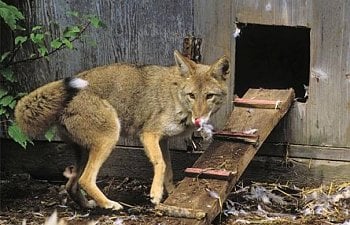
Predators can be a real problem, they are everywhere all over the globe. The day you move your birds outside to the coop, every predator within miles will know about it. Whether we are talking about day time, night time or the 24/7 predator, they are always lurking. Predators have a LOT of time on their hands and have become very patient and persistent in order to survive. They will spend hours if not days digging holes under the coop, tearing or chewing through wire or wood, they will lurk in the shadows until the time is right. You may not even be aware that a hole has been started by a mouse or weasel. Predators don't think logically like a human and deduce on any visual level thinking they can get in based on the design. Much of how a predator finds places to enter your coop is via smell. They will go around the base of your coop sniffing for a meal, when they find a place along the bottom of your coop where air is moving from the inside out, they start digging or tearing a hole. So it's very important to seal off the base of your coop and run well to stop air from moving through, cork all holes, slots, repair up places along the foundation where these monsters can get in. Some people pour cement pads and then build on top. Some bury Railroad ties and build up from here, some bury hardware cloth a foot or two below the surface along the edges, you can build up the edges with dirt and heavy rocks or pour cement along the perimeters. Even buried cinder blocks will work. There are so many ways to prevent predators from entering. Assume they can get in at any time, do daily inspections, a hole as small as a half inch can let them in. Never let your guard down.
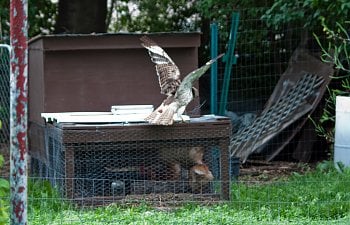
NEVER use chicken wire on any external areas of your coop or run. This stuff is so flimsy, coons can rip it apart in minutes, hawks can dive right through chicken wire, mice and rats go right through. Always use Hardware cloth. It comes in many sizes, 1/2 inch is commonly used on runs and external areas of the coop and run. Last fall I was over run with baby Garder snakes which were slithering easily through the 1/2 inch cloth on my run. I added 2 feet of 1/4 inch cloth from the bottom up and this has solved this issue. Build your coop like Fort Knox. If you feel perfectly safe sleeping in your coop at night, then your chickens should be safe too.
Build it sturdy too, the night time marauders are going to climb on, get on top, pick around and if an area is weak, they will find it. You should be able to stand on it, if nothing else lean on it and it stays put. Use hardy locks on all doors, critters love to climb the ramp and fiddle with doors. Make sure windows are impenetrable and sturdy in construction.
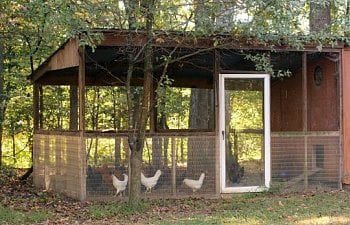
Consider adding an attached run if you haven't considered it yet. A run is wonderful to have on those days that the weather doesn't allow good free ranging, it's pouring rain, blizzard like snow or free ranging without supervision is not possible. Attached runs keep your birds safe and allow for exercise when free ranging is not possible for what ever the reason.
To Insulate or not to Insulate? What about Heating?
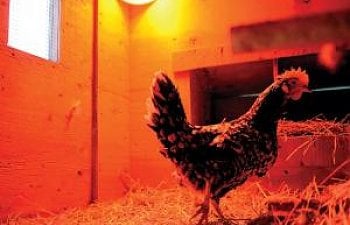
Whether or not to insulate your coop is a decision you will need to make based on your environment and your personal preference. Keep in mind however, there are members here on BYC that live in the high north of Alaska that keep birds in non-insulated 3 sided coops! Chickens come naturally covered in warm downy feathers to withstand the most brutally cold conditions and I personally believe that insulating or even heating a coop is not only unnecessary but detrimental to their health. No matter the reason you keep chickens, they are still outdoor creatures and nature provides them with less or more feathers, depending on your climate, to stay alive and thrive without you intervening. Insulating your coop and keeping out the cold will prevent them from being able to go outside or even into the run on those cold days. The long months of winter all cooped up together can lead to respiratory infections in this warmer moisture atmosphere of your coop, as well as cannibalism. Now all this being said, your environment or coop design may warrant the need for insulation. For example you keep only a few small bantams or a couple of Silkies in a small raised thin walled coop and you live in a very cold humid climate. For their sake, you might be better off with insulating the floors, walls and ceiling so that these few birds might stay warm on those bitter cold nights. Very humid climates might see the need to insulate to keep the humidity down inside the coop, however make SURE to do your homework on ventilation in humid cold climates, you do not want to close them all up in a wet coop. For those of you in very warm climates, insulation can hold in too much heat that has accumulated over the blazing hot day and will making sleeping uncomfortable if not deadly if it gets excessively hot.
Heating your coop is also something you don't want to do. Birds are designed to condition themselves to their environment, so by adding heat you are not letting them naturally adapt to the winter temps. Should your heat go out on a very cold night with birds that have adapted to this heat, you could lose them all. Your chickens will want to go outside at some point during these long winter months, why not let them naturally adapt to cold temps! (Very young, older birds or sick birds are the exception to this rule, but I won't get into this subject in this article.) However there may come a time when your outdoor temp is going to plummet 30 degrees off your AVERAGE over night low, it does happen. Say your average over night low normally ranges and swings from 10 degrees F to 30 degrees F and they are predicting an over night low of -20 F. Then and only then might you leave a panel heater on across from the roost bar or even a 250W Infra Red heat lamp on at 3 feet above their heads. This SMALL addition of heat will help them get through on these frigid nights without compromising their bodies for future cold nights. You aren't going to heat their entire space to what they are used to, only bring up the temperature in their bubble of heat a few degrees. I cannot emphasize enough, please make sure all heat lamps are securely attached to walls or ceilings! Use extra caution and attach them at two different places, NEVER just rely on the clamp as these can come loose over time, the heat lamp falls and causes a fire. So be safe with those heat lamps!
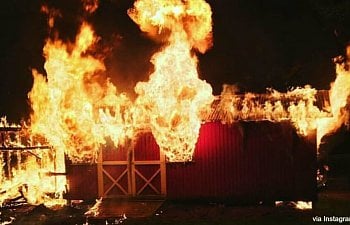
Keeping birds cool in the summer time:
The easiest way to keep your birds cool is to keep their feet cool! And how can we do that? Wetting down the bedding is one way, using misters is another way. I use a garden watering can filled with water and drizzle water on the bedding when temps are over 90 degrees F. Cool feet mean cool birds!
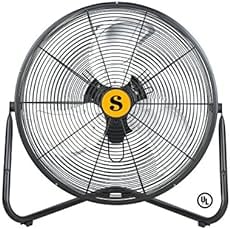
FANS! Can't say enough about big fans running in the summer time. Often I find my birds all lined up in the summer right in front of my big turbo fan, feathers flying, eyes closed with pure joy in the cooling breeze! Ice cubes in water bases, cool fruit treats, you can freeze up old milk jugs full of water so birds can snuggle up to them, even cool pans of water for them to stand in. If you find a bird panting profusely, unstable on their feet, pale comb, please do not hesitate to get the bird into some AC cooled air for a couple out hours, temps over 100 degrees can lead to heat exhaustion and death.
Ventilation:
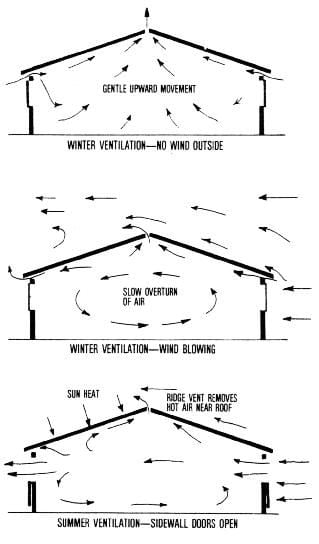
I can't emphasize this enough, you need big ventilation in your coop for the good health of your birds all throughout the year. Birds are constantly breathing and require great amounts of oxygen, releasing carbon dioxide and moisture. The poop releases moisture too as well as ammonia and strong odors. There needs to be a constant exchange of oxygen, carbon dioxide and moisture for birds to stay healthy, they need good quality air. You might think 15 degrees Fahrenheit is cold for your birds however a properly adapted bird that has gone through your area's changing season of fall to winter will be ready for these temperatures. They are designed to withstand brutally cold temps if acclimated, their downy feathers are natures insulation. Many people want to close up the coop tight when temps are expected to drop at night, closing every vent in the coop. This creates a very bad environment for your birds respiratory system. Ammonia's build up which destroy the birds eyes, lungs and air sacs, moisture that has risen from the breathing and the pooping can fall back down as frost giving them frost bite, this moisture will cause them to become wet and all this is detrimental to their lives. Chickens can withstand very cold temps, however they need to be dry. Closing up the coop too tightly will cause respiratory diseases in your flock. All the moisture and odor build up will cause bacteria and viruses to grow and flourish, mid to late winter and they all have MG, sinus infections or other respiratory ailments. Your birds NEED adequate ventilation at all times!
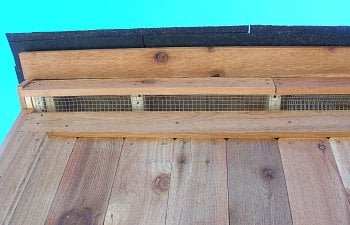
You will want to incorporate approximately 1 square foot of vent space per bird in the eaves of your roof. Get out there and cut some holes! (Of course cover them with hardware cloth when done.) The best venting system relies on the natural path of outside air currents. The slanted roof offers this perfect air flow...vents on the high and low side of the coop, air naturally wants to enter the low side, travels up the inside of the ceiling and out the high side of the roof. On the windiest of nights, you can close off some of the low side vents to slow the air flow down, however you are going to leave the high side vents open at all times. And what happens is, all the breathing and pooping odors and moisture gets picked up in this gentle air flow and gets sucked out the roof. Meanwhile your birds roost low to the floor in a quiet bubble of warmer air not only from the warmth of the floor (warm air rises) but the heat they generate themselves. Birds stay dry, out of drafts and they stay warm. Turbo fans attached to the roof are nice too as they spin with the slightest breeze and remove air from the coop. However make sure to cut vent spaces lower than this fan so it has air to suck out of the coop.
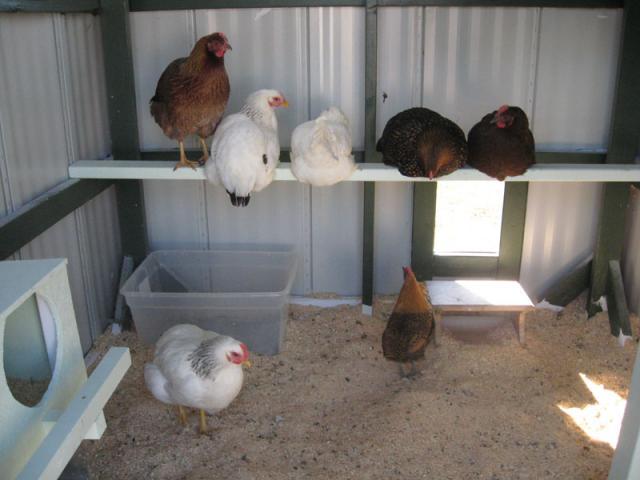
Roost bars:
Roost bars themselves aren't as much a health concern, but their placement and size will have effect on how well your birds survive cold or even hot temperatures over night. Birds should roost lower to the floor instead of high up in the rafters and the reason behind this is not only is the floor warmer and the birds will stay warmer in the winter months, the ceiling is hotter in the summer and birds don't need to over heat all night long. Lower roosts combined with a good venting system keep them out of the moving air and frosty ceilings where as high roosts will have them right up in the moving cold air leading to health issues. Birds that roost high may not use ladders and ramps and will jump or fly down from high places. If your coop is not big enough for flight, birds can smash into walls. If they jump from high places they can sprain or tear tendons when they hit hard on the floor. So keep your roost bars lower, 15 inches off the floor is plenty. If you go a bit higher, make sure the ramp to get off the bar is very accessible and make sure they use it.
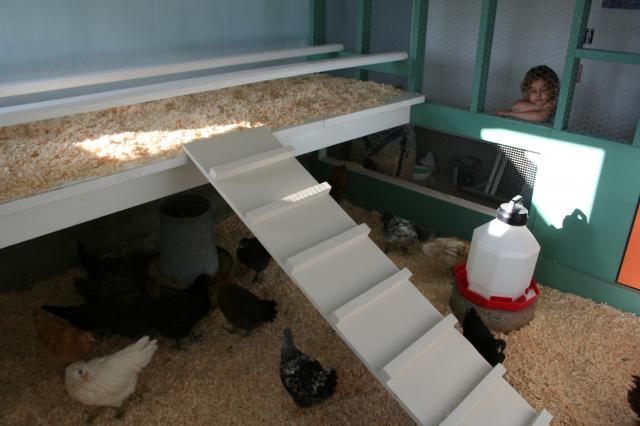
I like to use 2x4's with the 4 side up. This helps the bird keep their feet warm with their breast feathers on those cold winter nights, avoiding frozen feet. You can use natural cut boughs from trees, make sure they are a couple inches wide for foot warmth and there are no sharp cutting stems or edges on them. Give each bird 1 foot of space on the bars, they will snuggle or space out as needed.
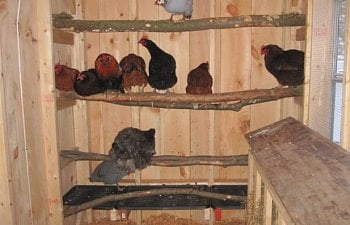
Bedding the coop and run:
You will need to use some sort of bedding on the coop floor and run to help absorb poop and smells, add cushion when they stand on it all day and for added warmth in colder seasons. There are many types of litter you can use to bed the floors, here is a list of the most commonly used litters:
1. Pine Shavings: This is the most popular type of litter used for chickens and other small animals. It is found at feed or pet stores and is light in weight. It is absorbent, warm and is easy to maintain. It lends itself well to the Deep Litter Method (DLM), instead of scooping out and replacing chicken coop litter frequently, you allow the poop and bedding material to accumulate and decompose inside the coop. As in compost, beneficial microbes actually help control pathogens, so chickens are less susceptible to diseases as chickens become immune to their environment. Starting with about 3 inches of pine shavings, each week add a thin layer of the existing bedding, especially under the roost bars. You can turn it in yourself, breaking up all the big clumps or let your chickens do the scratching. After 6 months or so (some go a full year), remove most of it, leaving some as "starter" and begin again with a new layer of bedding. Pine shavings can be purchased at many feed and pet stores.
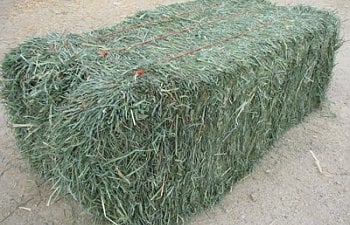
2. Grass Hay and Straw: These grasses make for wonderful bedding from the brooder to the coop. Grass hay is very soft for brooders and coops and has a wonderful smell. Straw doesn't have the grassy smells, however it's a very warm grass being that the stems are hollow. If you live in a very cold climate with brutal winters, straw is the way to go. Grass hay stays light and fluffy, straw can mat down, however they can both use a tossing occasionally. The draw back to the grass hay is that the chickens will eat it.The birds won't eat the straw however some say straw can attract mites because the stems are hollow and make attractive places to lay their eggs. If you keep your coop bug free, this shouldn't be a problem. Feed stores that carry horse supplies will carry grass hay and straw.
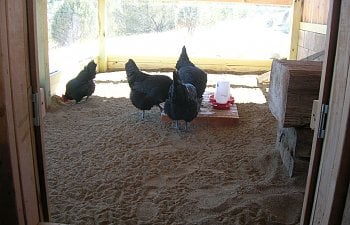
3. Sand: If you live in warmer climates, sand is a wonderful medium to use on your floors. You can hose it down in the summer and it's like sand at the beach, cooling the entire bird down! It naturally repels flies since it is not an organic type material, it stays dry when wet so to speak and dries fast, chickens LOVE to scratch and dust bathe in it. You can use it to cover over muddy spots in your run and it's very easy to maintain. A kitty litter scoop will pick up much of the waste. The drawbacks to sand is that it is very heavy to add and remove and leaves you with a very cold floor during the winter months. Some natural sands are quite dusty and dirty. You can purchase cleaned pet sand, dig up river sand and some gravel companies have sand you can purchase for a cheap price by the truck load.
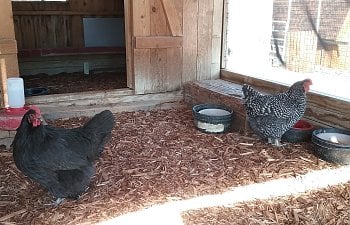
4. Mulch/Bark: I started using mulch a few years ago and after having tried all of the above, I am in love with mulch! I am talking about the heavy chip type mulches, the stuff you might cast over your garden to retain moisture in the dirt. You can use a Pine Mulch or even a Western Cedar Mulch (not to be confused with Easter Cedar Mulch which has very pungent oils which will harm the delicate respiratory systems of chicks and adult chickens, never use Eastern Cedar shavings or mulch), it is absorbent, very warm in the winter months, it retains its woody smell keeping odors in the coop down. Pine mulch is very nice to use as well, it's woody aroma keeps the coop smelling good. (Never use mulch that has been colored, it may contain toxic chemicals.) Do not store mulch in the bags they come in as they can grow mildew. I keep a pile outside in back of the coop exposed to the elements, I work off this pile as needed. You can purchase mulch at plant nurseries, Lowes, HomeDepot and Walmart.
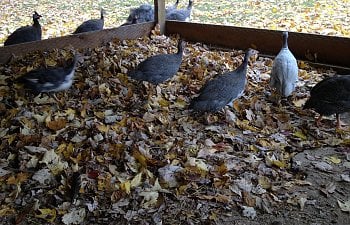
5. Dry Leaves: If you are looking for a way to get rid of all your raked up dried leaves, throw them into the coop and run! Chickens love to scratch around in dried leaves and will give them hours of amusement. Never use undried leaves on the floor, they will mat together and if wet can cause sprains and splay legs if birds slip and slide on them.
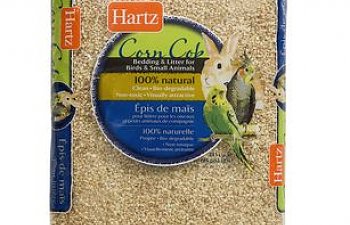
6. Corn Cob Bedding: These are especially nice in brooders as they do a wonderful job at absorbing moisture and trapping odors. Corn Cob absorbs twice as much liquid compared to traditional bedding making it great in helping to prevent Coccidiosis in chicks, even in adult birds. You can purchase this stuff at many feed and pet stores.
What ever you use on your floors as litter, you can use in your nest boxes as bedding.
Windows:
Windows bring in light, something we don't give much thought to. However chickens that hang out in the coop on those gloomy days do need light. Too many dark days can send a bird into a molt, so it's important to cut in a couple of windows for added light. In the summer, keep the windows open for good air circulation and cooling from the scorching summer days. Chickens love a soft breeze on the roost bar on those hot summer nights!
Keeping the floors healthy:
It's important to keep your floors healthy since this is where your birds will spend much of their time if they are not out free ranging. It's important to keep all molted feathers picked up, not only do bored chickens eat them, (very bad habit you do not want your chickens developing) but these cast off molted feathers are vessels for mites to lay eggs on or have already laid on, hence hatching mites in the bedding. Whether you use the Deep Litter Method, or pick up poop on a daily basis, just keep it clean at all times. Your coop should never smell horrible, if it does you need to either increase your venting system or keep your coop cleaner. If the smells are not tamable, you can spread down PDZ or Stall Refresher on your floors or poop boards before adding litter. This material helps to neutralize and eliminate harmful ammonia and other odors that could effect your bird's respiratory system. It's natural, non toxic and has no added scent. You can dispose of it right in your compost pile or garden.
For preventing a bug infestations, DE or Diatomaceous Earth is widely used, spreading it in a thin layer on the coop floor and run before adding litter. It is a white porous powder that is the fossilized remains of marine phytoplankton. On a microscopic level, DE particles are very sharp and will cut the exoskeletal system of mites, lice and other creepy crawlies, thus killing these bugs. Always use Food Grade DE with chickens. If you find that you do have a persistent bug problem, you may want to clean out the coop, run and nest boxes monthly, spray everthing down with Permethrin spray and replace the bedding. Sometimes it takes several months of applying Permethrin and coop clean outs to get a hold of the bug situation. Repeat this occasionally if needed.
Dust baths in the run! We all know how much chickens love to dust bathe which helps keep feathers in tip top shape and keeps those mites and other tiny livestock at bay! If you have the room in your run, you might designate one corner for dust bathing. You can section off a small section with rocks, 2x4s or other timber. Haul in dirt from outside, sand, other mediums. Even an old tire or planter full of clean soil will work. (Do not use soil with fertilizer or perlite in it). If you like you can throw a handful of DE or even Wood Ash into the dust bath for extra measures to help ward off the bugs.
Do you have a muddy run?
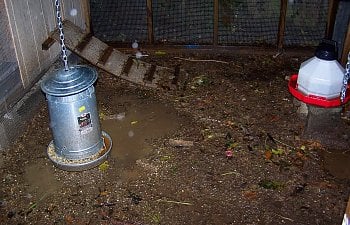
Try to divert all rain water away from your coop and run if possible or regrade the dirt around the area. Use a roof on your run to keep the weather out. If every effort on your part fails to keep the water and mud out of your coop and or run, you might resort to to using more bedding materials, especially things like straw or mulch (do not use saw dust or wood shavings which will only make matters worse) adding a barrier to the mud. Pallets or plank walkways laid in the mud will give you and the birds places to stand off the wet and mud. Pine needles, sand and top soil will also work.
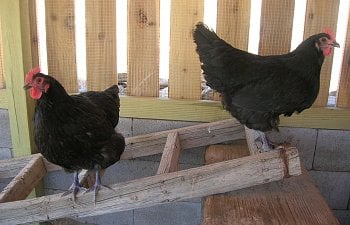
For mental health of chickens:
Chickens get bored easily especially birds that aren't out free ranging, burning energy and occupying their minds. And what do they do when they get bored? Pluck feathers, peck at each other, argue, guard feeder and water stations, etc...So give them things to do when hanging around in the run!
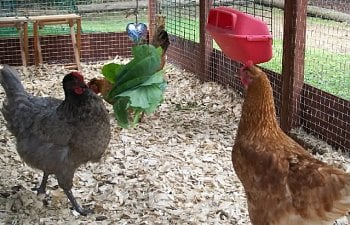
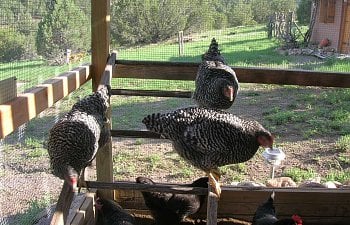
Hanging cabbages add a wonderful way to wile the hours away, greens in suet cages or seed blocks help to bust boredom and burn energy. Levels, posts, roosts, ladders, mirrors, food toys, swings, places to jump out of the way of others or just sunbath quietly. Throwing a flake of Alfalfa hay in the run will entertain them all day long! Things that stimulate their minds will make them happier and healthier.
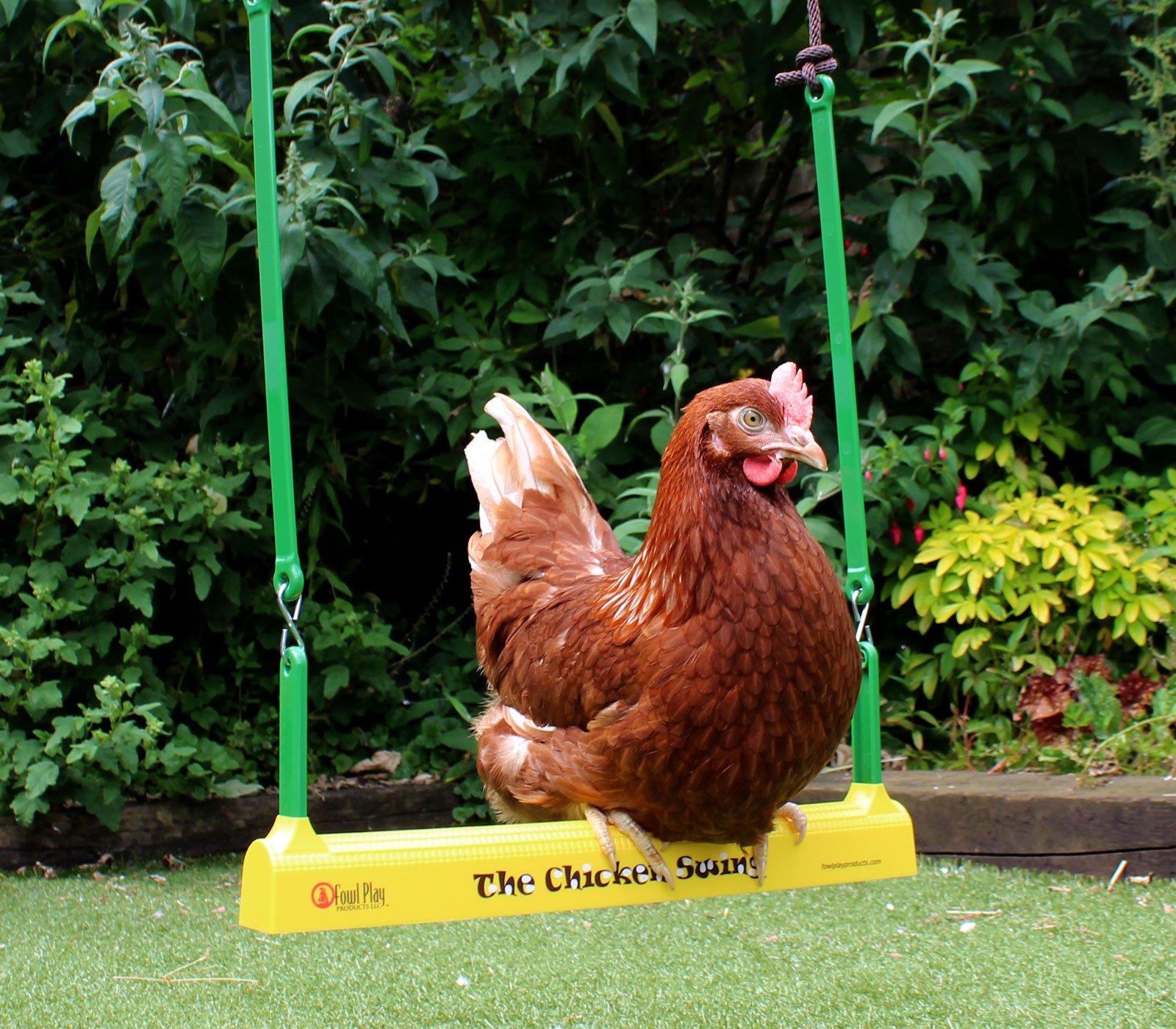
I hope this article has given you some ideas to incorporate into a new coop build or your existing coop to give your birds the best possible environment for mental and physical health. A healthy bird is a happy bird!
Please stop by the following links for further reading on subjects mentioned in this article.
Size requirements:
https://www.backyardchickens.com/forums/coop-run-design-construction-maintenance.9/
Building your coop:
https://www.backyardchickens.com/articles/category/chicken-coops.12/
Predators:
https://www.backyardchickens.com/forums/predators-and-pests.13/
Insulation:
https://www.backyardchickens.com/articles/to-insulate-or-not-to-insulate.65153/
Winter Coop:
https://www.backyardchickens.com/articles/winter-chicken-keeping.67128/
https://www.backyardchickens.com/articles/winter-coop-temperatures.47763/
Fire Safety:
https://www.backyardchickens.com/articles/fire-safety-in-the-coop-and-barn.72414/
Ventilation:
https://www.backyardchickens.com/ar...-there-and-cut-more-holes-in-your-coop.47774/
Deep Litter Method:
https://www.backyardchickens.com/ar...st-way-to-deal-with-chicken-litter-dlm.47740/
Bugs:
https://www.backyardchickens.com/ar...-fleas-dealing-with-external-parasites.74599/
Muddy Runs:
https://www.backyardchickens.com/articles/how-to-fix-a-muddy-run-chicken-coop.47807/
Runs and Mental Health:
https://www.backyardchickens.com/ar...ke-your-run-more-fun-for-your-chickens.67370/
https://www.backyardchickens.com/ar...important-and-how-you-can-provide-them.66136/

